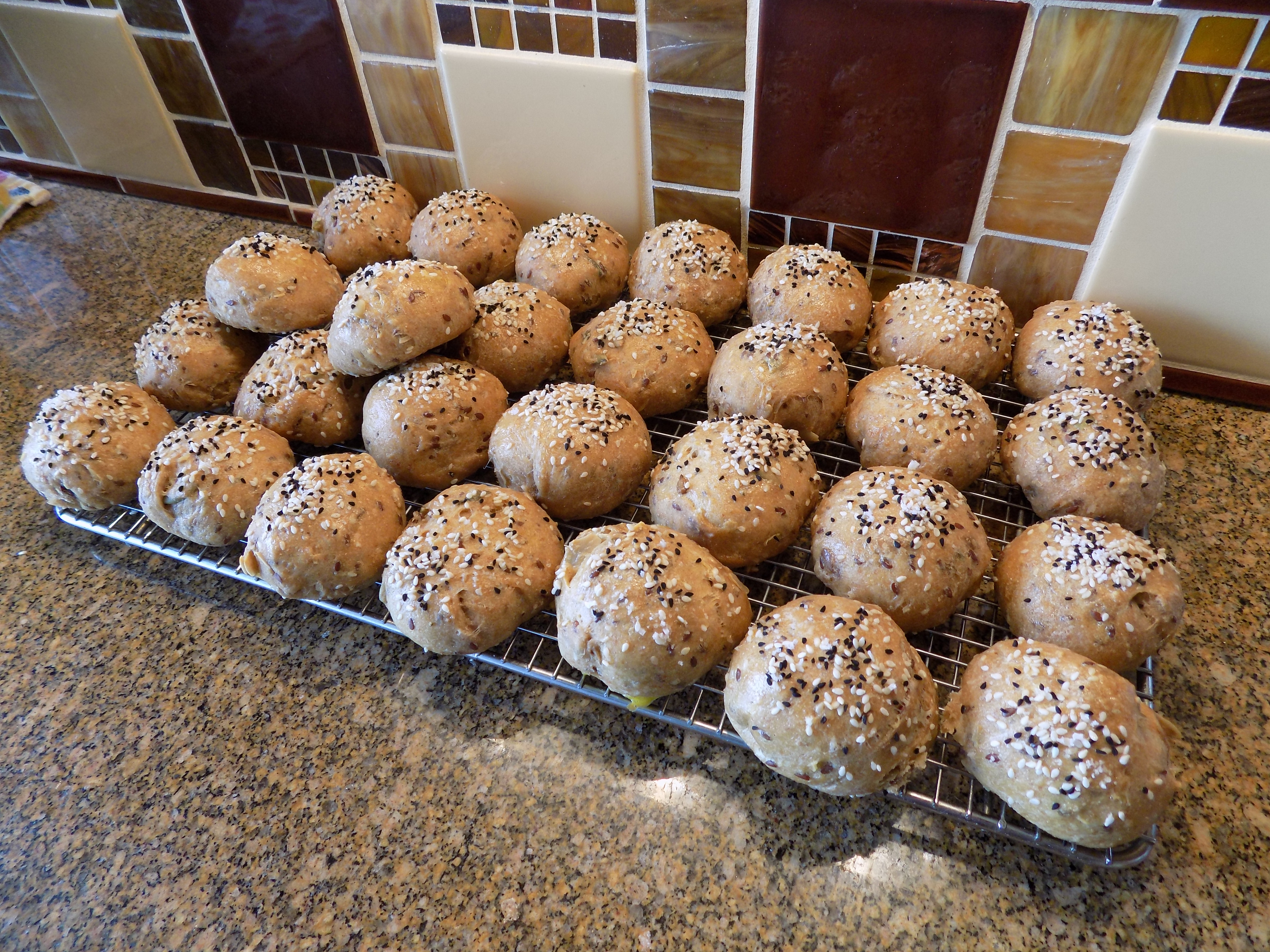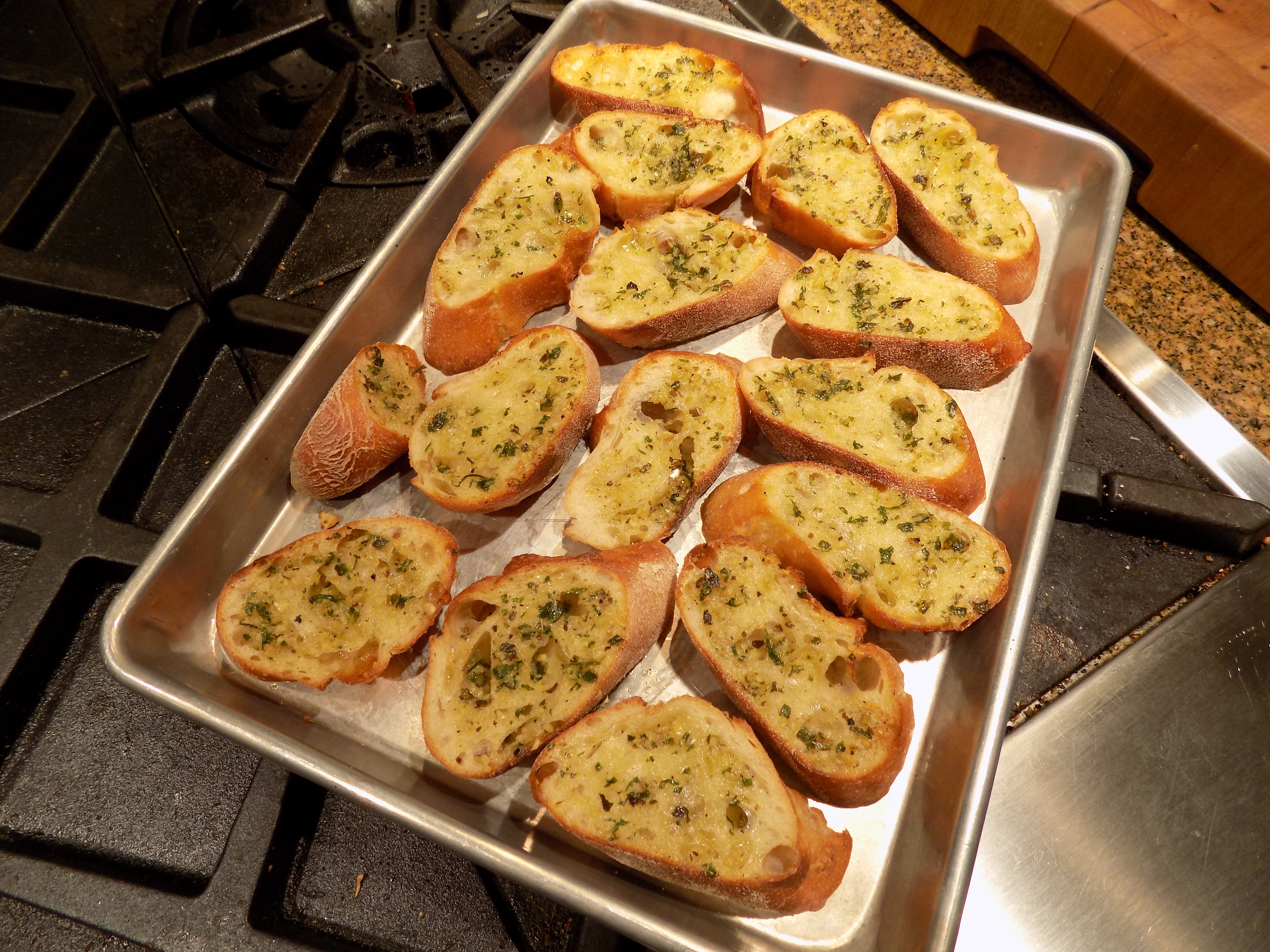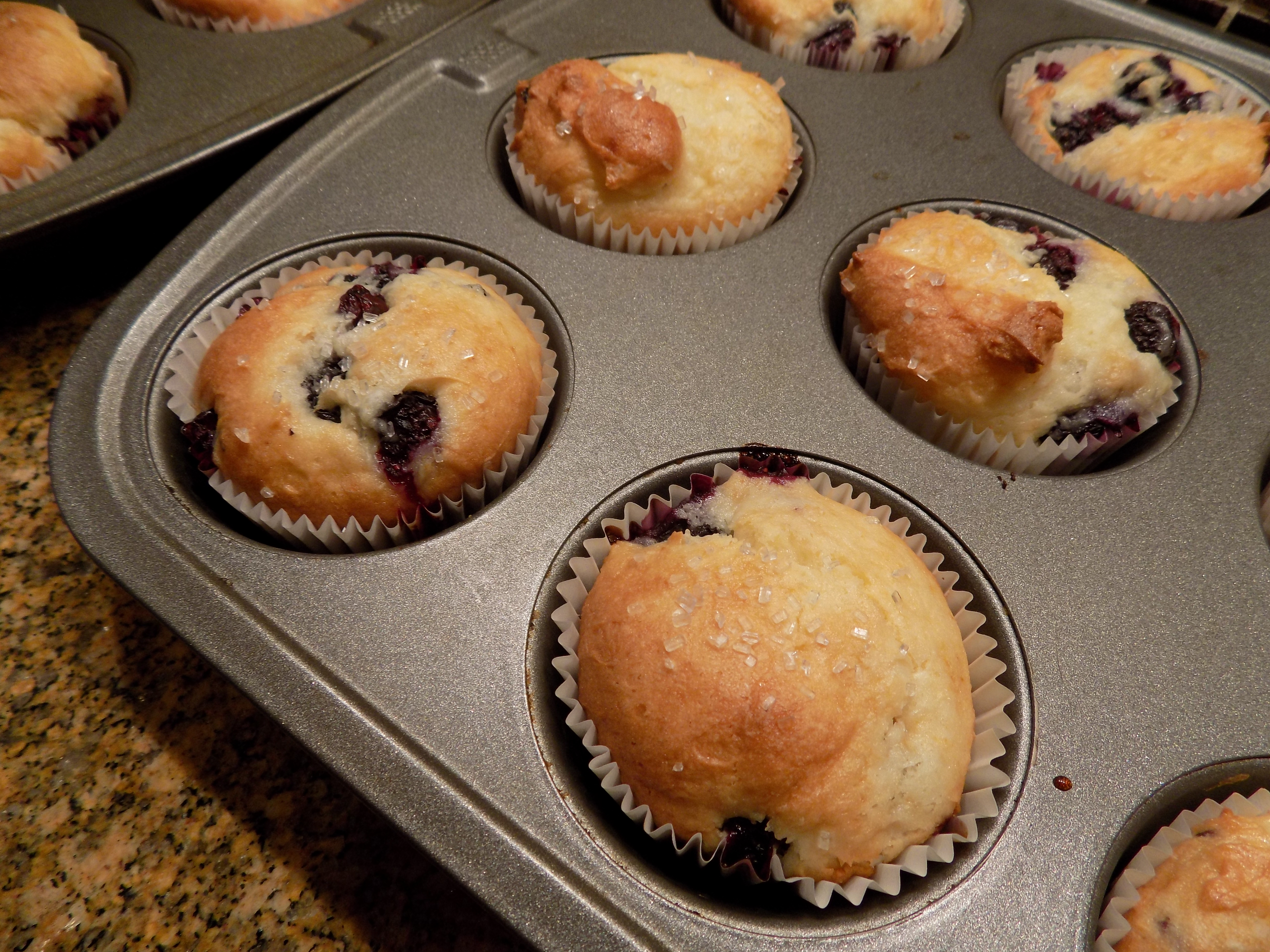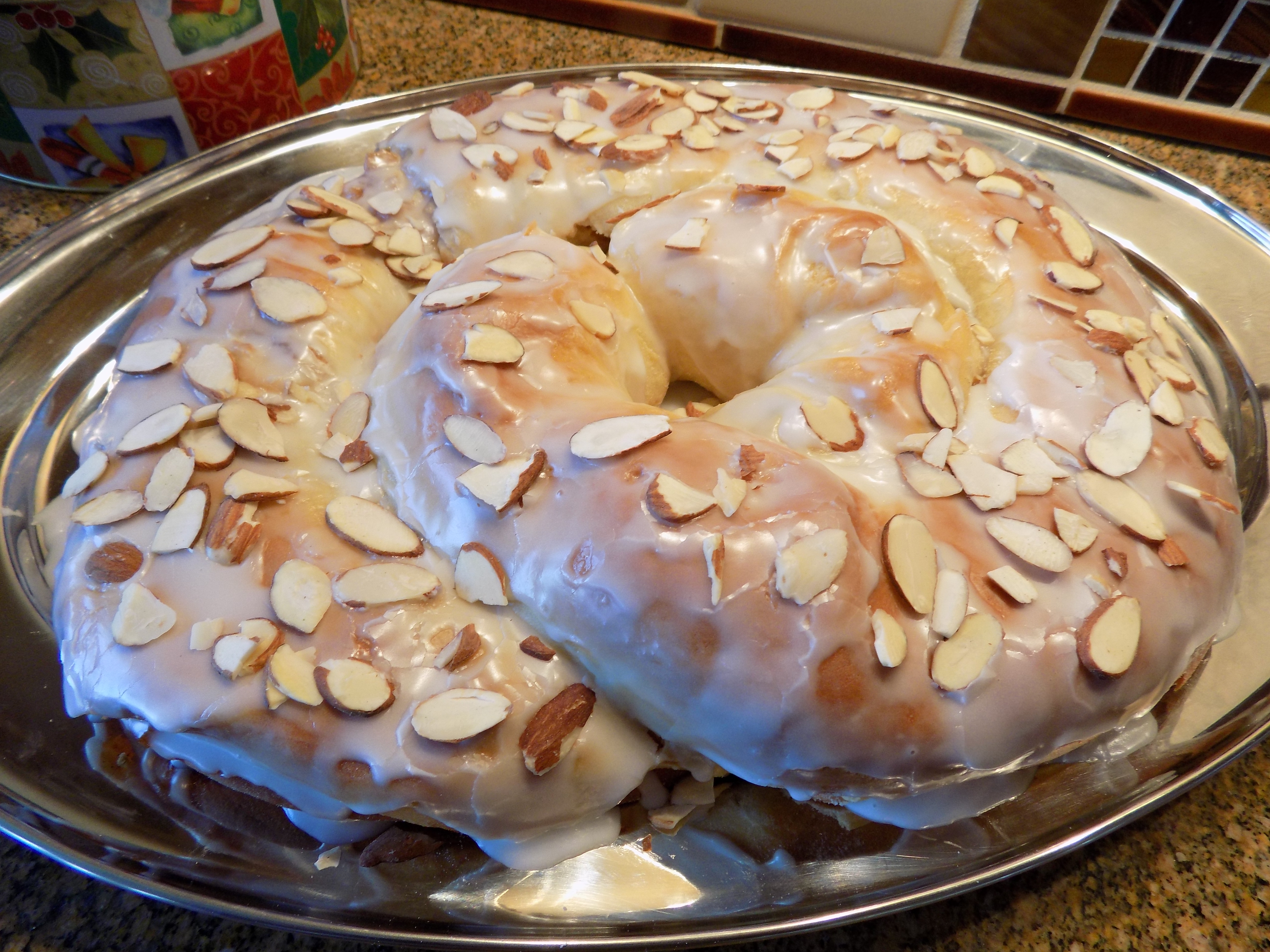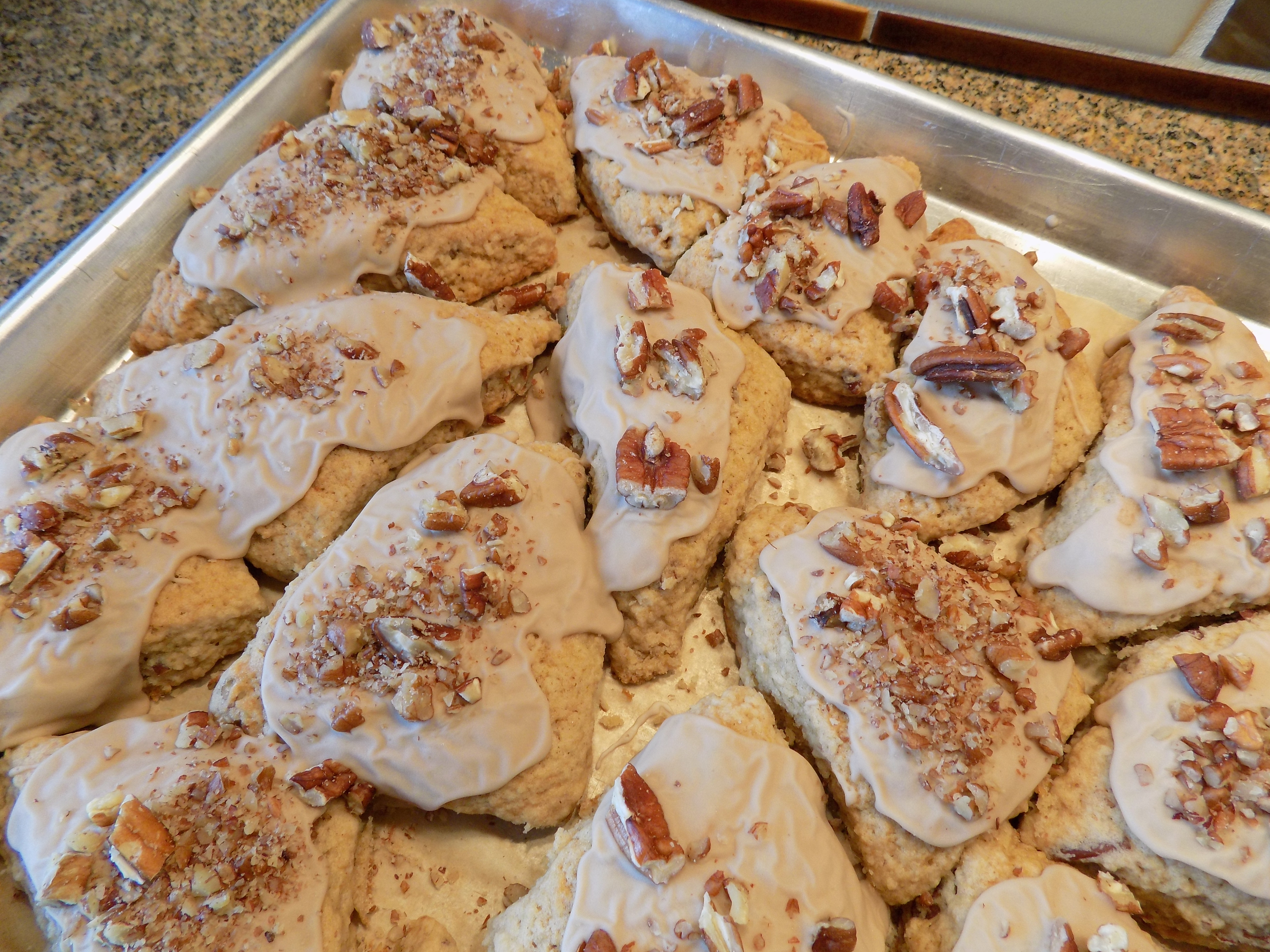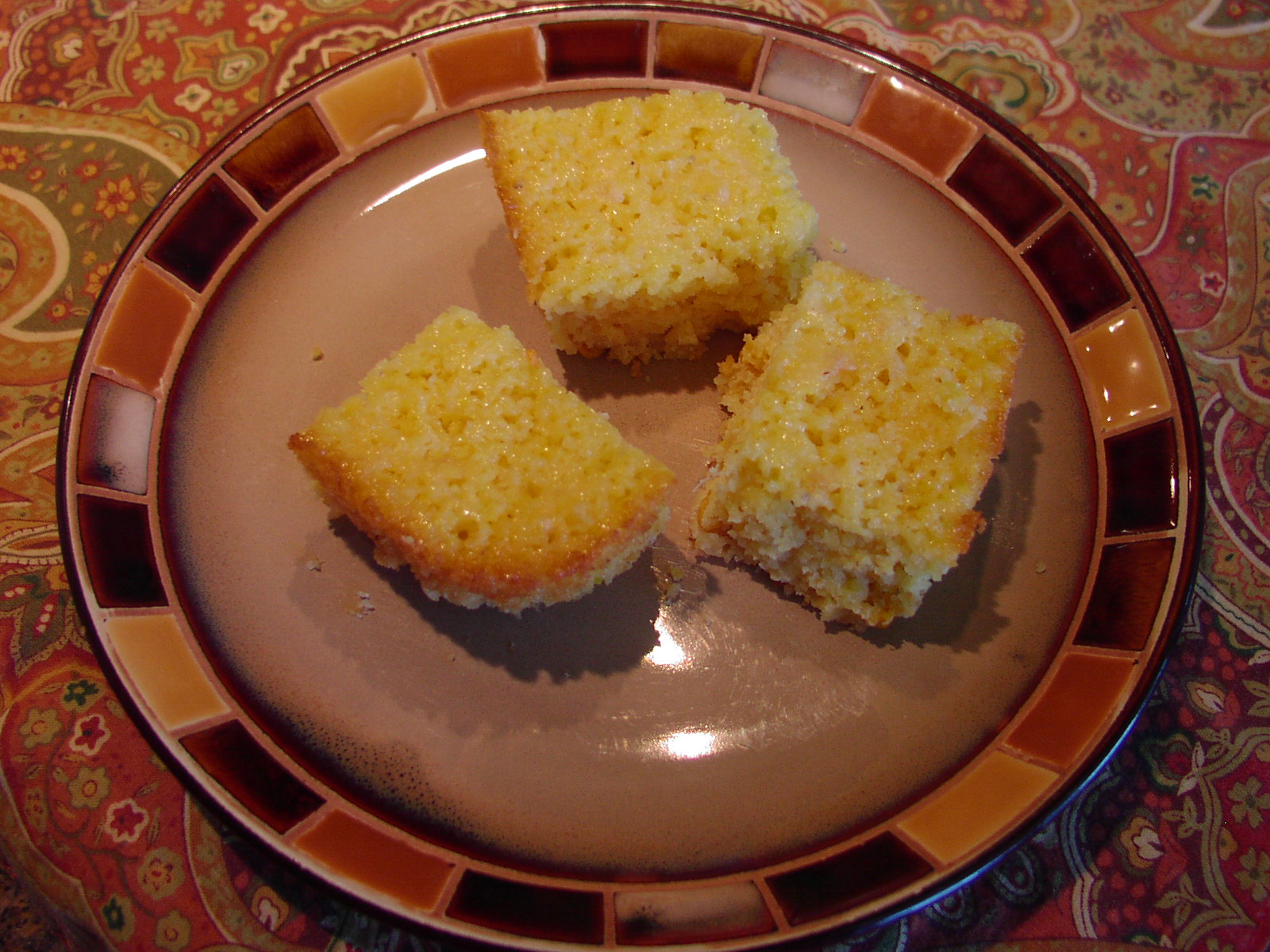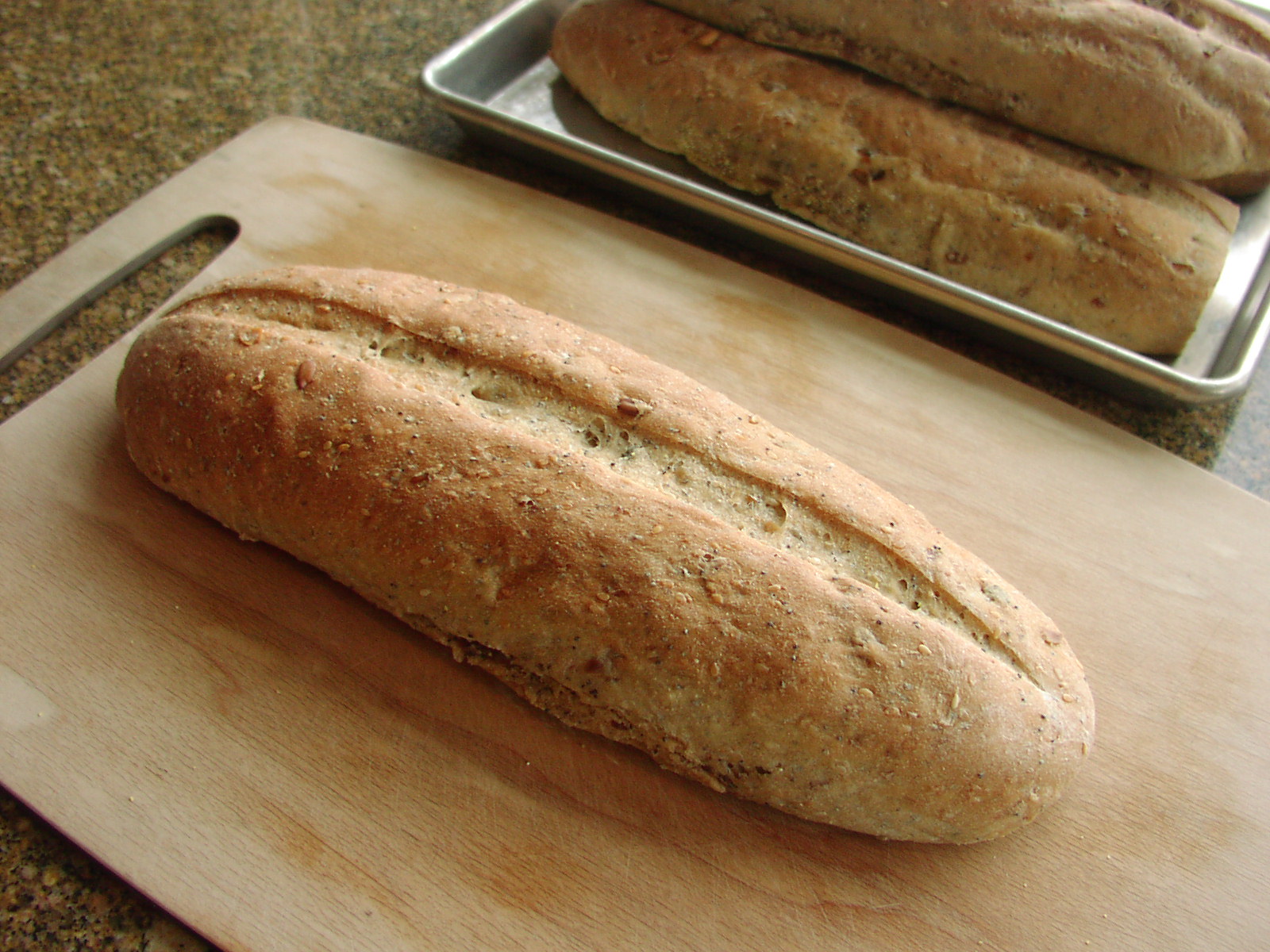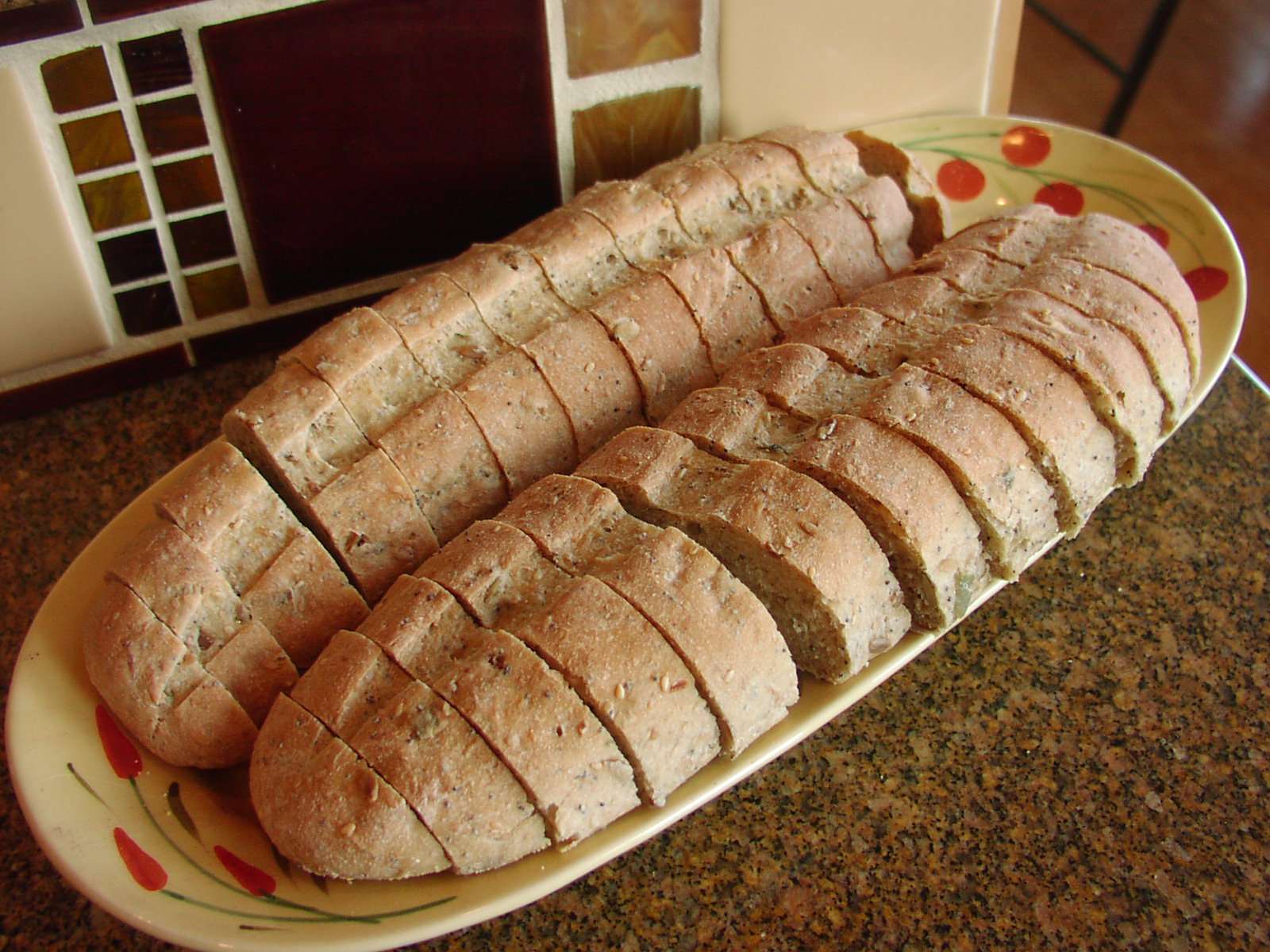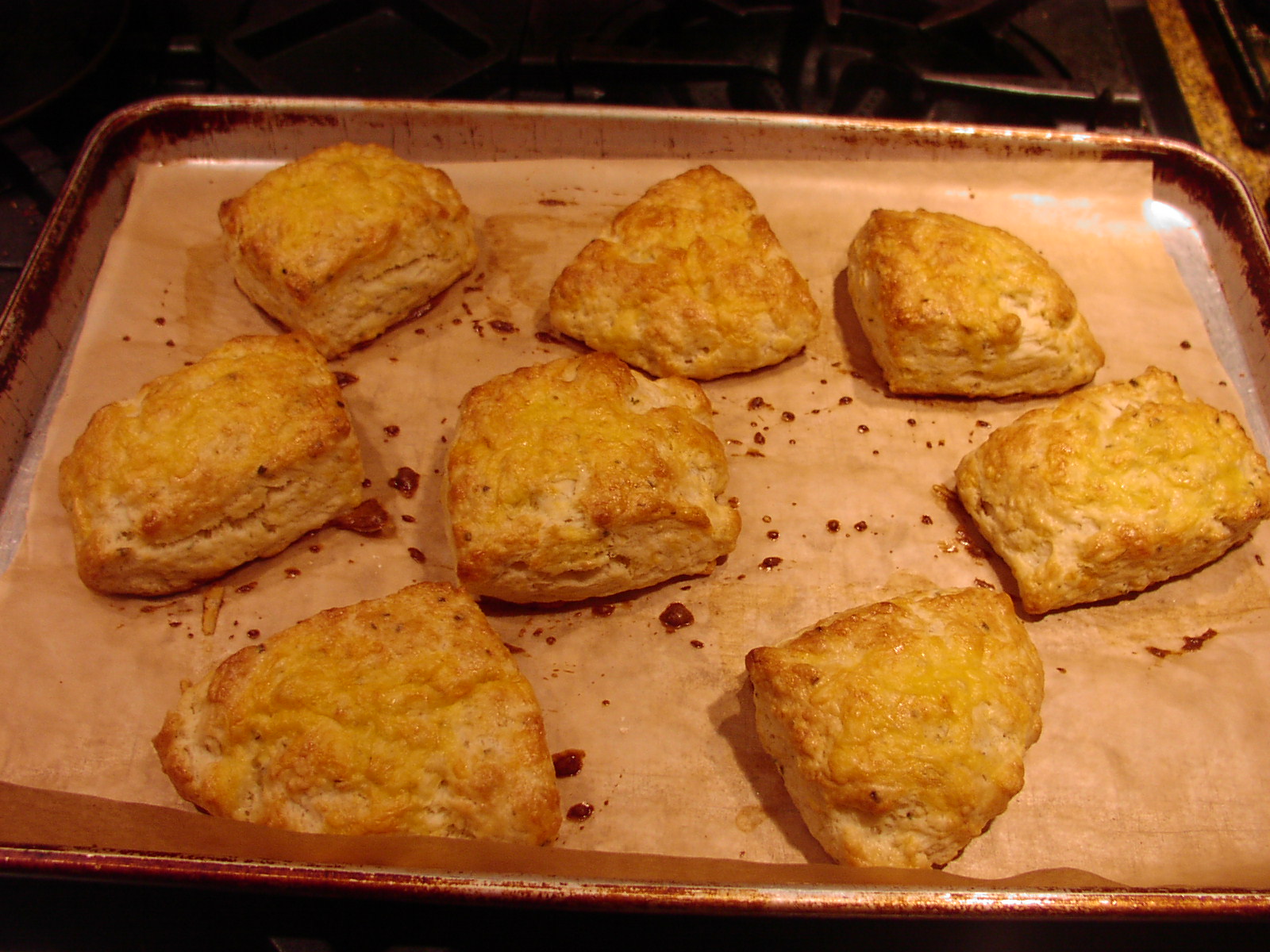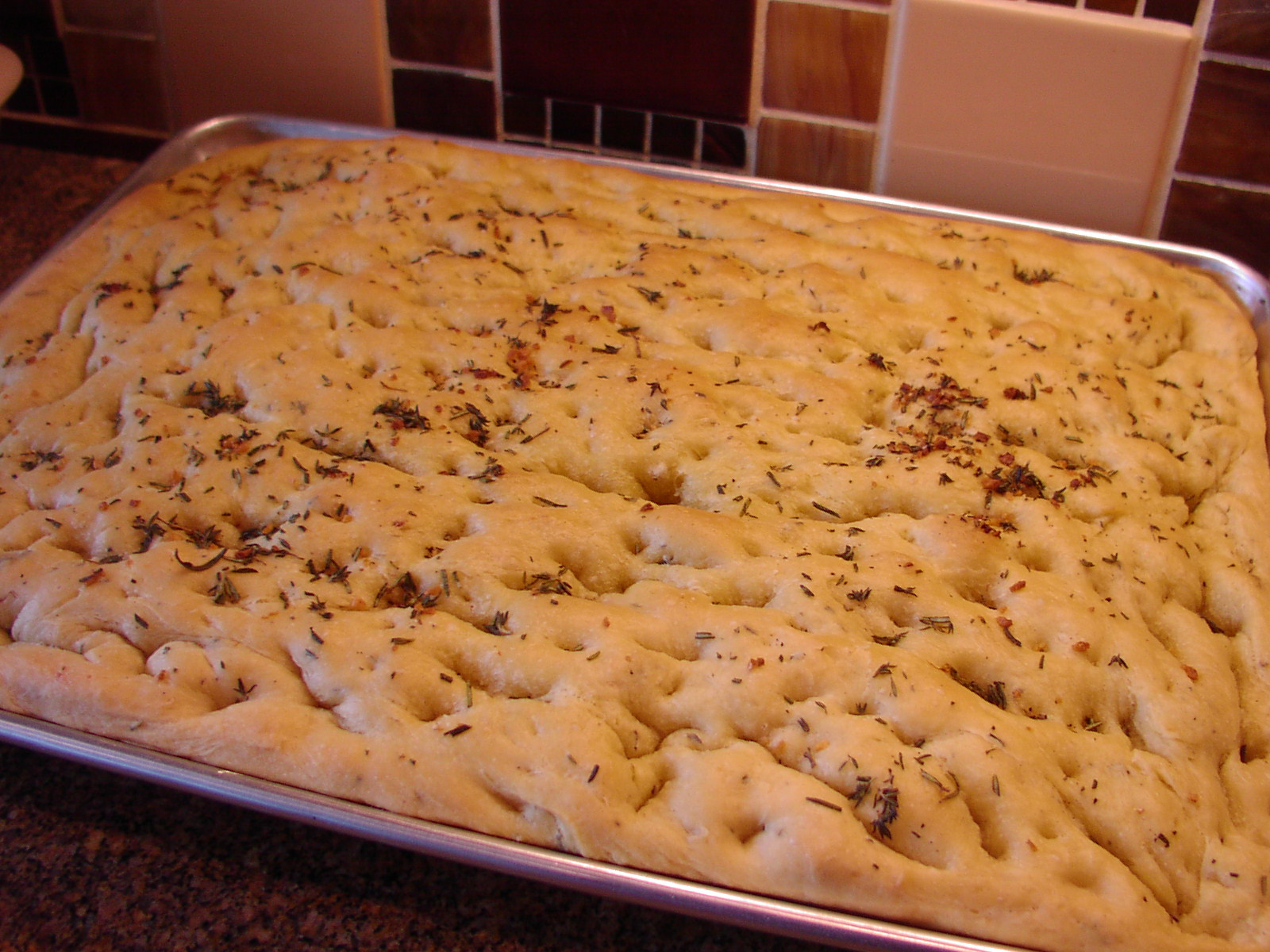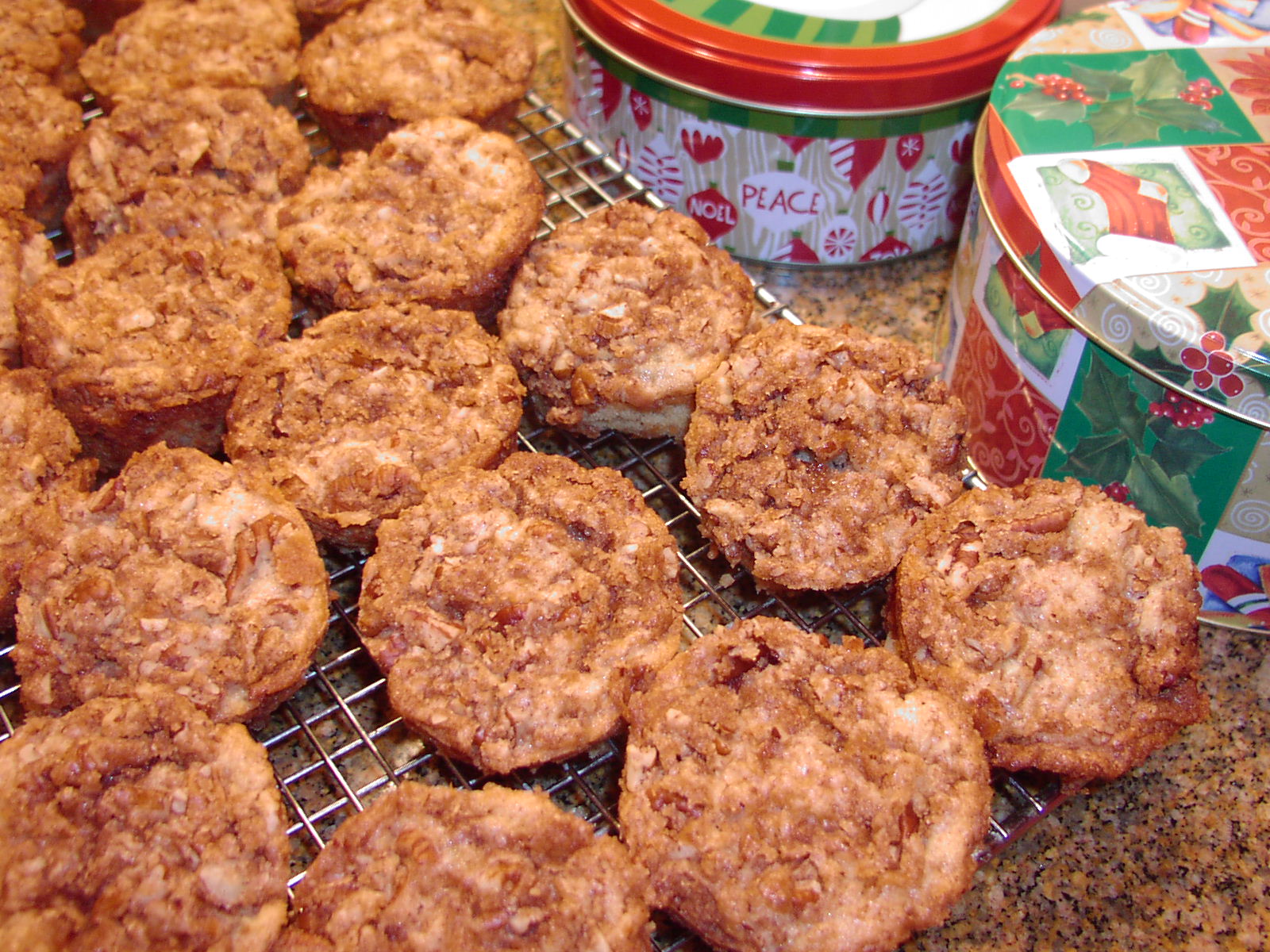So, the first thing you need to know is that this bread takes 3 days to prepare. OK, not 3 full days, but you need to start 2 days in advance. Allow me to explain. The first day you place some of the seeds in a bowl, add water, cover, and place on your counter overnight. This step – 5 minutes max, unless of course you have trouble locating one of the seeds, then – well – you’re on your own time! The second day you make the dough and let it rest in your refrigerator overnight. The third day you shape the rolls, allow them to rise, add a topping, and plop them in the oven. So technically 3 days. But actually no more work time than any other yeast bread. And what do you get for your time and effort? Well you get about 32 perfectly delicious, soft, and healthy dinner rolls.
Now I know I’ve already told you how I feel about sitting down to a fine dinner in a restaurant or a holiday or special occasion dinner at home without bread or rolls. But for those of you who haven’t heard me rant on the subject, suffice it to say, I think it’s barbaric! In other countries, it’s almost illegal to have even an everyday meal without some kind of bread being at least offered. So my question is – where did America go wrong? (Oh God, I could expand on this subject until the cows come home. But in the name of common sense and good manners, I will refrain from any political discourse at this time.)
Anyway, for a recent pre-concert meal in our home, I planned to serve three different sauces to go on rice. What I needed was a roll that would complement each of the sauces but yet have a presence of its own. So I thought a hearty roll featuring onion, different grains, and seeds would be perfect. Through much research, I came up with this recipe which is a compilation of several internet recipes and a couple of my own standards. Fortunately the result was well received. In other words, our guests very much enjoyed the rolls.
So next time you plan a special dinner for your family and/or friends, I would invite you to give these rolls a try. But unless you know your guests very well, I would refrain from talking politics. Nothing spoils a meal faster than some fool who disagrees with your well thought out and accurate point of view!
- ¼ c. sunflower seeds
- ¼ c. pumpkin (pepita) seeds
- 2 T. flax seeds
- 1 c. room temperature water
- 1 T. dark molasses
- 2 tsp. active dry yeast
- 1½ c. cold water
- 2 c. unbleached bread flour
- 2½ tsp. kosher salt
- ¼ c. sesame seeds
- 1 T. poppy seeds
- 3 T. dehydrated chopped onion
- 2 eggs
- ¼ c. extra virgin olive oil + more for greasing the mixer bowl
- 1 c. spelt flour
- 2 c. whole-wheat flour, plus more as needed
- Topping:
- 1 small egg, beaten
- 1 T. sesame seeds
- 1 tsp. nigella seeds* or black sesame seeds
- coarse sea or kosher salt, for sprinkling, opt.
Place the sunflower, pumpkin, and flax seeds in a small bowl; add room temperature water. Cover with plastic wrap and allow to stand on the counter overnight. The next day, rinse the seeds with cool water and drain well. Set aside.
Pour the molasses, yeast, and cold water into the bowl of a stand mixer; stir to dissolve. Whisk in the 2 cups bread flour to obtain a batter-like consistency. Cover bowl with plastic wrap and leave at room temperature until mixture looks active, about 30 minutes. Add the drained soaked seeds, salt, sesame seeds, poppy seeds, and dehydrated onion. Use your dough hook to stir the seed mixture into the yeast mixture. Then add the eggs, olive oil, spelt flour, and whole-wheat flour. Knead the dough until smooth, about 4 to 5 minutes. Sparingly add additional flour if needed. (Dough should be a bit sticky.)
Pour a small amount of olive oil over the dough, and using your hands, roll the dough into a ball. Make sure the entire ball is lightly greased. Cover the bowl with plastic wrap and refrigerate overnight for a slow, cool rise**.
The next day, remove the dough from the refrigerator and allow to sit at room temperature for about 90 minutes. Form the dough into small balls and place 2-inches apart on a parchment lined baking sheet. Cover dough balls loosely with plastic wrap and place in a warm spot until balls have doubled in size, about 1 hour.
Uncover and brush top of balls lightly with beaten egg. Mix together the sesame and nigella seeds. Sprinkle mixture over each ball, then sprinkle very lightly with sea or kosher salt. Bake in a pre-heated 375 degree oven for 15 to 20 minutes, or until lightly browned. Cool on a rack.
Please note: If ever in doubt that your bread is fully baked, take its temperature. The ideal average bread temperature is 200 degrees F.
*Nigella seeds are used as a spice in East Indian and Middle Eastern cuisines. The black seeds taste like a combination of onion, black pepper, and oregano.
**If you wish to skip this step, leave dough to rise in the bowl covered with plastic wrap until doubled, about 1 hour. Then proceed from the sentence beginning “form dough into small balls……..”

